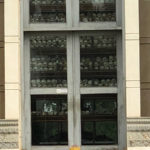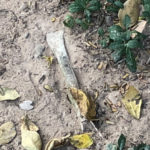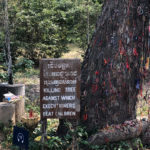February 27, 2018

Jade Emperor Pagoda
Built in 1909 in honour of the supreme Taoist god (the Jade Emperor or King of Heaven, Ngoc Hoang), this is one of the most spectacularly atmospheric temples in Ho Chi Minh City, stuffed with statues of phantasmal divinities and grotesque heroes. The pungent smoke of incense (huong) fills the air, obscuring the exquisite woodcarvings. Its roof is encrusted with elaborate tile work, and the temple’s statues, depicting characters from both Buddhist and Taoist lore, are made from reinforced papier mâché.
Inside the main building are two especially fierce and menacing Taoist figures. On the right (as you face the altar) is a 4m-high statue of the general who defeated the Green Dragon (depicted underfoot). On the left is the general who defeated the White Tiger, which is also being stepped on.
Worshippers mass before the ineffable Jade Emperor, who presides – draped in luxurious robes and shrouded in a dense fug of incense smoke – over the main sanctuary. He is flanked by his guardians, the Four Big Diamonds (Tu Dai Kim Cuong), so named because they are said to be as hard as diamonds.
Out the door on the left-hand side of the Jade Emperor’s chamber is another room. The semi-enclosed area to the right (as you enter) is presided over by Thanh Hoang, the Chief of Hell; to the left is his red horse. Other figures here represent the gods who dispense punishments for evil acts and rewards for good deeds. The room also contains the famous Hall of the Ten Hells, carved wooden panels illustrating the varied torments awaiting evil people in each of the Ten Regions of Hell. Women queue up at the seated effigy of the City God, who wears a hat inscribed with Chinese characters that announce ‘At one glance, money is given’. In a mesmerising ritual, worshippers first put money into a box, then rub a piece of red paper against his hand before circling it around a candle flame.
On the other side of the wall is a fascinating little room in which the ceramic figures of 12 women, overrun with children and wearing colourful clothes, sit in two rows of six. Each of the women exemplifies a human characteristic, either good or bad (as in the case of the woman drinking alcohol from a jug). Each figure represents a year in the 12-year Chinese astrological calendar. Presiding over the room is Kim Hoa Thanh Mau, the Chief of All Women. Upstairs is a hall to Quan Am, the Goddess of Mercy, opposite a portrait of Dat Ma, the bearded Indian founder of Zen Buddhism.
Fine Arts Museum Ho Chi Minh City
Being one of the largest fine arts centers of Vietnam, Fine Arts Museum is conveniently located near the Ben Thanh Market, at 97A Pho Duc Chinh Street, District 1, Ho Chi Minh City. The building that houses the museum was originally a mansion of a Chinese during colonial time and after – Mr. Hoa, the wealthiest man of Saigon at the time, who also owned other famous buildings in the city such as Majestic Hotel and Tu Du Hospital.

This yellow-white grand colonial-era mansion is a combination of French and Chinese styles which brings about a typical colonial feeling through its marble floors throughout and the spacious, airy rooms. It’s no wonder that the building is considered as a masterpiece itself by most people. As Saigon became Ho Chi Minh City and the country reunited, the building was reformed into a museum in 1987 as the result of a decision of the City’s People’s Committee, though it was not officially opened until 1991.
The Fine Arts Museum is indispensable for those who are keen on Vietnam arts and culture. Although the museum itself is not big and modern enough, its abundant collections can make up for these mistakes. The museum focuses on collecting, keeping, preserving and displaying fine artworks typical of Vietnamese people, especially Ho Chi Minh City and the South. It comprises three floors of exhibition space.
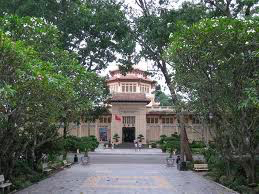
The 1st floor is for domestic and international arts display. The 2nd floor is where to store arts work – both paintings and sculptures of Vietnamese and non-Vietnamese artists. Some leading Vietnamese artists of the last 50 years whose paintings are displayed there include: Trinh Cung, Do Quang Em, Diep Minh Chau and Nguyen Gia Tri.
The 3rd floor holds a collection of historic arts ranging from 7th century to early 20th century, featuring Champa and earlier civilizations such as Oc Eo archaeological site in Mekong Delta. The contemporary Blue Space Contemporary Art Centre, located near the entrance, is run by the museum. There’s a warren of galleries in the basement, accessed through the courtyard in the center of the building.
While the guides point out that not much is in english, at least the titles of the painting are in english. While thw collection is small and often dark in nature the pieces do show talent by the artists. Like make other places the tilt is towards communism and tends to make the French, Japan and the US the bad guys. Ir still woth the 30,000 dong or $1.32 US.
museum throug the streets of Siago, andWe walked back from the art we stopped by the cooking school to verify the schedule for tommrow and confirm our “street maket and food tour” which will be given by by Ms. Tham.
We also made reservations at Hoa Tuc Restaurant for dinner at 1900. The menu looks great and its one one the best in the neighborhood. The restaurant specializes in regional cuisine of Central Vietnam. Some of the best seafood dishes in the area are to be enjoyed in a traditional setting with traditional music.
Pat’s still feeling a bit down from the common cold that I past her way compliments of some Britiah tourist next to me on the plane from Hanoi to Siem Reap.
Dinner was excellent. We had Saigon spring roll which we wrapped in lettuce leaves with mint and other herbs. We order two kinds of shrimp, both lightly battered and sautéd. The food wa light so we have room for dessert chocolate ice cream for Pat and grilled bananas with vanilla ice cream.
We met two men at the table next to us from the international mission board, headquartered in Richmond; small world! Sam James worked bor the board for 54 years, they were here in Saigon for a conference.
Ben Thanh Market
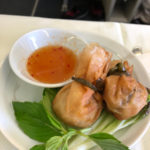
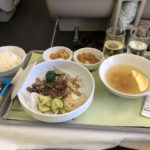
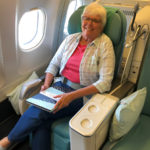 Unfortunately Korean Air never asked us about bags and just checked them through to tomorrows flight. Fortunately Pat had her meds in the carry-on. I can live a day without them.
Unfortunately Korean Air never asked us about bags and just checked them through to tomorrows flight. Fortunately Pat had her meds in the carry-on. I can live a day without them.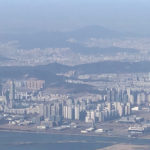
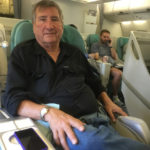 did not know where we were staying and the immegration officier was very confused about us not have an address in Seoul or elsewhere in the country, I think he finally got it, because he finally gave us a stamp, really a ticket, but there were a number of strange looks.
did not know where we were staying and the immegration officier was very confused about us not have an address in Seoul or elsewhere in the country, I think he finally got it, because he finally gave us a stamp, really a ticket, but there were a number of strange looks.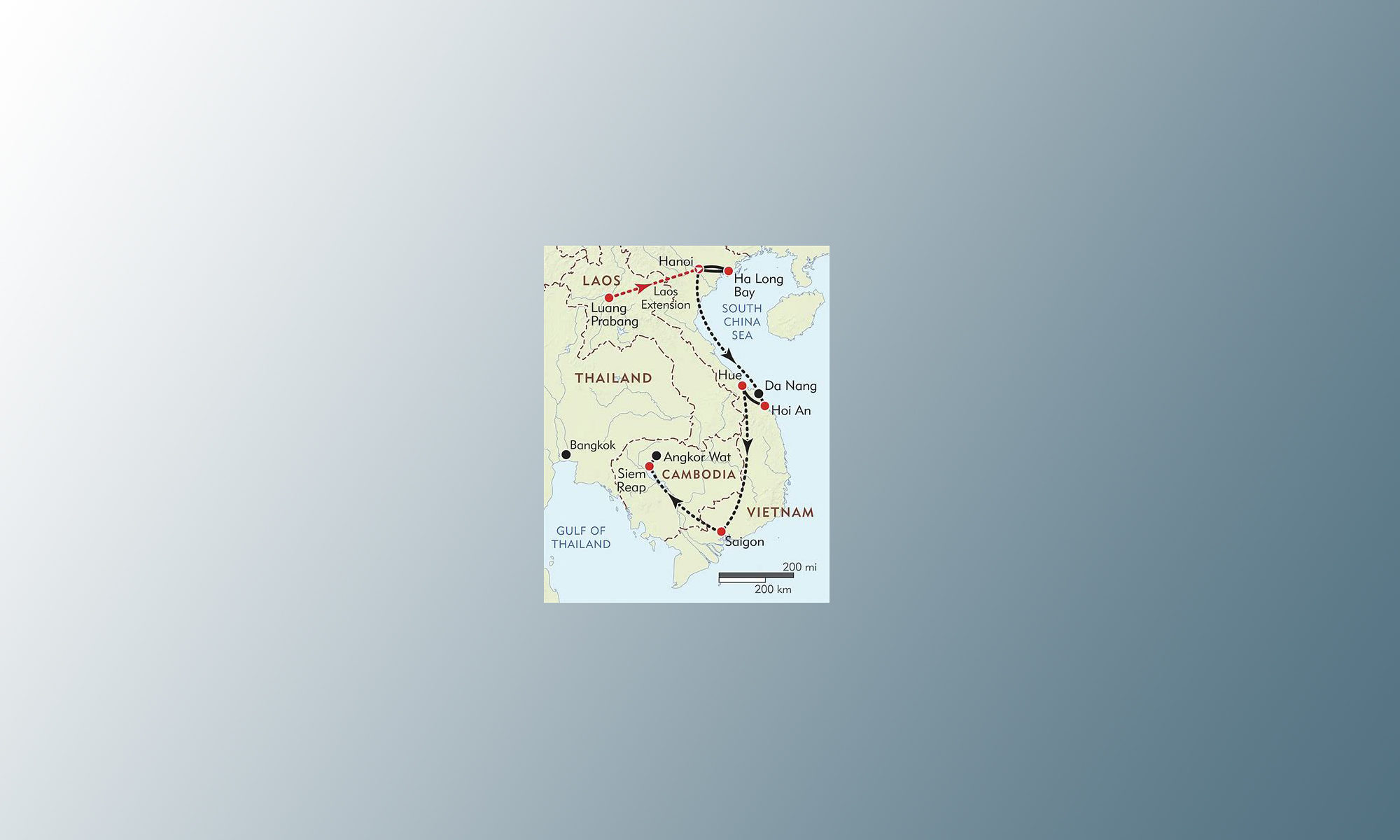
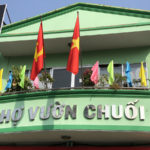 started our journey to the small permanent market Cho Vuon Chuoi in the 10th quarter. The side streets were lined with vendors and these were refered to as quick markets where people could ride up stop and get what they required for the day without the need to get off their scooter and park. The market was as expected narrow alleys with vendors on both sides selling fruits, vegetables, rice, noodles, and the list was extensive. First stop for a sample was the fresh spring being made by a vendor for the days sales. Rice paper
started our journey to the small permanent market Cho Vuon Chuoi in the 10th quarter. The side streets were lined with vendors and these were refered to as quick markets where people could ride up stop and get what they required for the day without the need to get off their scooter and park. The market was as expected narrow alleys with vendors on both sides selling fruits, vegetables, rice, noodles, and the list was extensive. First stop for a sample was the fresh spring being made by a vendor for the days sales. Rice paper filled with pork, shrimp, lettuce and garlic chives. Along the way we sampled fried bananas and sweet poatoes
filled with pork, shrimp, lettuce and garlic chives. Along the way we sampled fried bananas and sweet poatoes 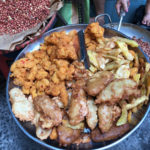 which were dipped and fried as we waited. I was able to get a great deal of information from the chef about various vegetables and herb and combinations.
which were dipped and fried as we waited. I was able to get a great deal of information from the chef about various vegetables and herb and combinations.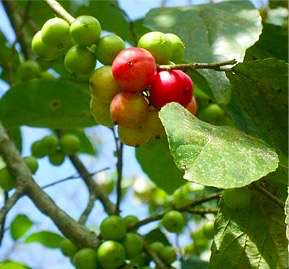
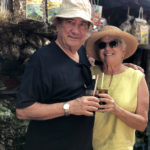 A quick stop for an energy drink of tea made with various herb and a sugar cane syrup with gave the drink a taste of a hint of mollassas. Next stop was for breakfast at a woman who made home-made rice cake, similar to too but far more flavorful. She prepared the
A quick stop for an energy drink of tea made with various herb and a sugar cane syrup with gave the drink a taste of a hint of mollassas. Next stop was for breakfast at a woman who made home-made rice cake, similar to too but far more flavorful. She prepared the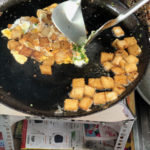 dish outside her home on a small flatish wok and sauted the rice cake with eggs. It was served with green papaya on top
dish outside her home on a small flatish wok and sauted the rice cake with eggs. It was served with green papaya on top 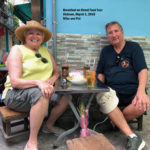 and a chili dipping sause which we added additional chili to. We also had traditional ice coffee with sweetend condensed milk which gave the coffee a chocolate milk like taste.
and a chili dipping sause which we added additional chili to. We also had traditional ice coffee with sweetend condensed milk which gave the coffee a chocolate milk like taste.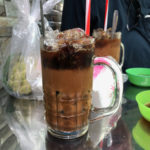
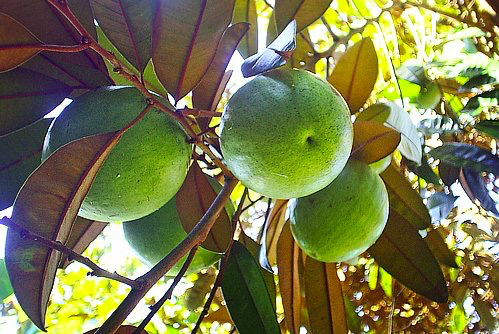

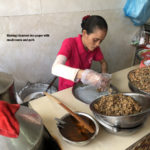 More food, we stopped to watch a woman making steamed rice paper and filling with meat, amd chopped mushrooms and we sampled a plate served with a sauce and lettuce and mung bean sprouts.
More food, we stopped to watch a woman making steamed rice paper and filling with meat, amd chopped mushrooms and we sampled a plate served with a sauce and lettuce and mung bean sprouts.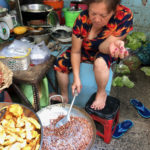
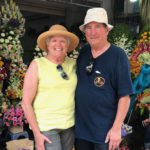
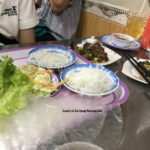 roasted pork in bettlenut leaves. You use rice paper and lots of lettuce and herbs and dip in a banana flavored sauce. Outstanding! Tham concluded our tour and back to the hotel.
roasted pork in bettlenut leaves. You use rice paper and lots of lettuce and herbs and dip in a banana flavored sauce. Outstanding! Tham concluded our tour and back to the hotel.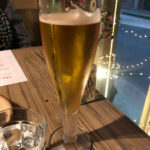
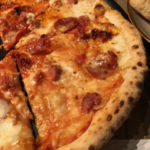

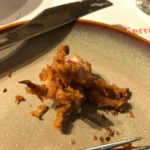

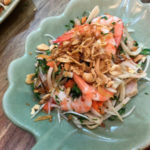







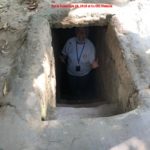

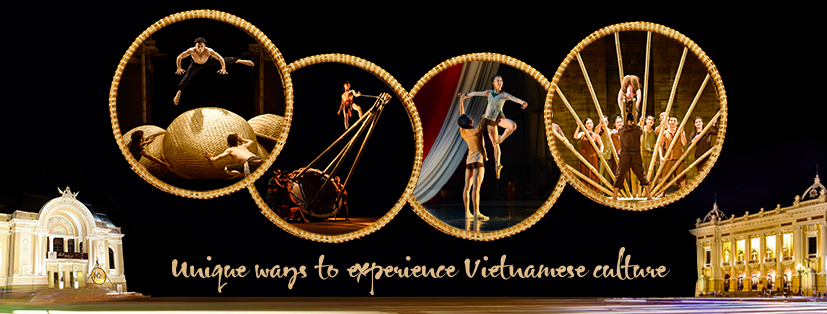


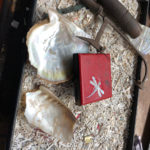


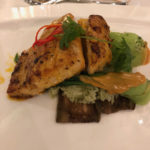
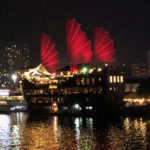
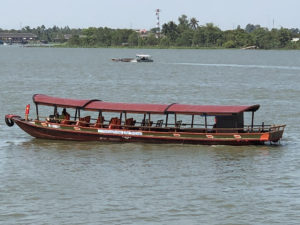 We left the boat at 0830 for a rice factory where pop rice, rice paper and other rice products are made.
We left the boat at 0830 for a rice factory where pop rice, rice paper and other rice products are made.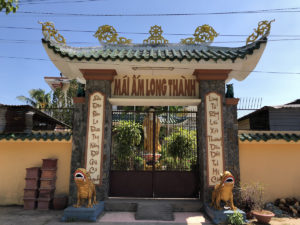 We then proceed to visit a pogoda where Vietnamees Monk and Nuns live. The Vietnamce Buddist sect is vegetarian only. Included in this pagoda is a nursing home where elerly people with no family live. While their live is regimented beginning at 0545 and ending at 2130, they arriver to live comfortably by Vietnamesse standards getting three meals of rice and vegetables and even sticky rice dessert. They can watch TV in the evening from about 1600-2130.
We then proceed to visit a pogoda where Vietnamees Monk and Nuns live. The Vietnamce Buddist sect is vegetarian only. Included in this pagoda is a nursing home where elerly people with no family live. While their live is regimented beginning at 0545 and ending at 2130, they arriver to live comfortably by Vietnamesse standards getting three meals of rice and vegetables and even sticky rice dessert. They can watch TV in the evening from about 1600-2130.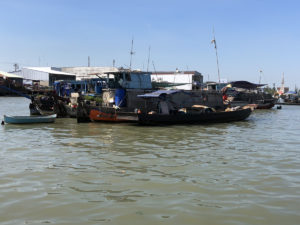 As we entered the canal at Cai Be we passed floating market, although few in number, since they construct a bridge across the canel ,we still observed boats selling daikon, bananas and sweet potatoes. They display what they are selling attceched to a long bamboo pole, advertising Vietnamese style.
As we entered the canal at Cai Be we passed floating market, although few in number, since they construct a bridge across the canel ,we still observed boats selling daikon, bananas and sweet potatoes. They display what they are selling attceched to a long bamboo pole, advertising Vietnamese style. sanpan because the sitting position was too low. Good move we skirted the island with an excellent breeze,
sanpan because the sitting position was too low. Good move we skirted the island with an excellent breeze,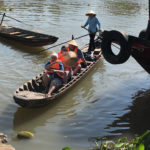 while Pat and the others sweated being below the tall grasses and trees.
while Pat and the others sweated being below the tall grasses and trees.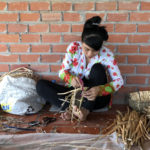 They joined back up with us at the water hyacinth is dried and made into baskets and other items. We then proceed to walk around the island, about a kilometer. First stop was to watch a grand mother making roof panels from coconut leaves
They joined back up with us at the water hyacinth is dried and made into baskets and other items. We then proceed to walk around the island, about a kilometer. First stop was to watch a grand mother making roof panels from coconut leaves 
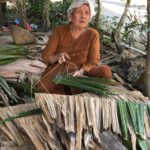 paper producing venture this one was slightly different than the first. They poured the rice batter into a can with holes and then swirled around a small 12-inch wok. The finished product looked like fine lace.
paper producing venture this one was slightly different than the first. They poured the rice batter into a can with holes and then swirled around a small 12-inch wok. The finished product looked like fine lace.
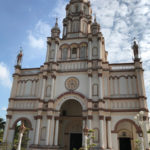
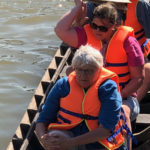 We left the ship at 0840 for the 15 minute sanpan ride to the island, the island is 50 square miles and a population od 50,000 people. We boarded a 6 person
We left the ship at 0840 for the 15 minute sanpan ride to the island, the island is 50 square miles and a population od 50,000 people. We boarded a 6 person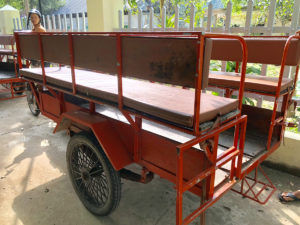
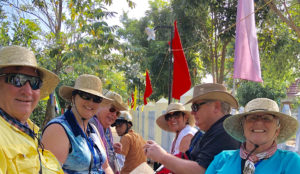 tim-tuk and drove to one of the 3 Cathloic churches on the island. As was past local sops and houses it was appearant that thia is a successful island. We toured the church and had a brief Q&A by the Franciscan priest, dressed in street clothes. He is also a physician specialing in leprosey and shin disorders and has been on the island for 40 years. We say our good bye with his blessing and continured by tsk-tuk to a manago orchard to see how the people
tim-tuk and drove to one of the 3 Cathloic churches on the island. As was past local sops and houses it was appearant that thia is a successful island. We toured the church and had a brief Q&A by the Franciscan priest, dressed in street clothes. He is also a physician specialing in leprosey and shin disorders and has been on the island for 40 years. We say our good bye with his blessing and continured by tsk-tuk to a manago orchard to see how the people 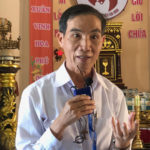 grow and harves mangos. The mangos that are of high quality are pagged during the growing season to keep them near perfect foe export at a very high price with Japan paying
grow and harves mangos. The mangos that are of high quality are pagged during the growing season to keep them near perfect foe export at a very high price with Japan paying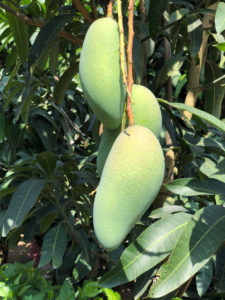 the highest. They are also exported to the US, Canada and Australia.
the highest. They are also exported to the US, Canada and Australia.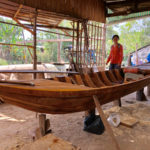 from Golden oaks which grow on the islan and ate 40-50 foot all buy slender. When on is cut more are planted. The grandfather was dilligently work on bending a lenght of oaks heating over fire for the fibers to be flexible enought to bend with out breaking.
from Golden oaks which grow on the islan and ate 40-50 foot all buy slender. When on is cut more are planted. The grandfather was dilligently work on bending a lenght of oaks heating over fire for the fibers to be flexible enought to bend with out breaking.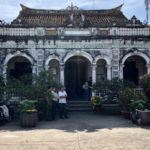

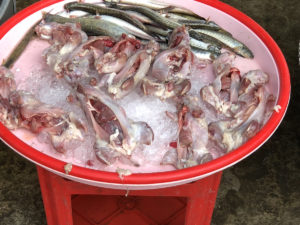
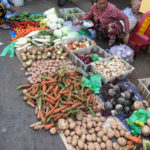
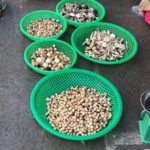


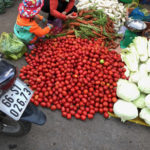

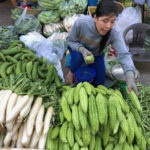
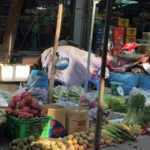

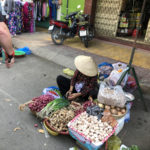
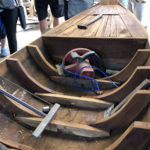
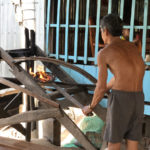
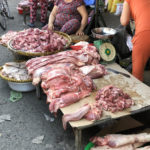





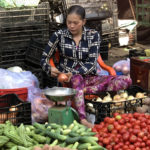

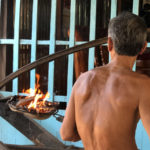
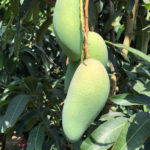


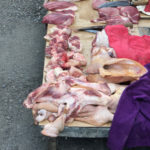

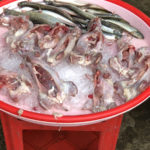
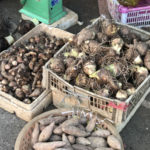
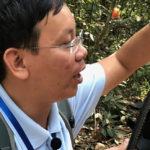
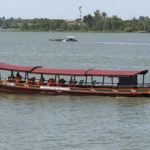 been anchored here all night off the cost, in the Mecong River. We took a ride in a XE LOI traditional Rickshaw using person power via bicycle and go for a visit to the
been anchored here all night off the cost, in the Mecong River. We took a ride in a XE LOI traditional Rickshaw using person power via bicycle and go for a visit to the 
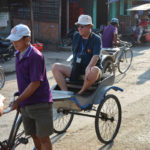 local rattan factory that produces baskets and mats. Most Vietnamese now sleep on mattresses so it will be interesting to hear about changing markets, probably beach mats in Europe, Asia ans the US.
local rattan factory that produces baskets and mats. Most Vietnamese now sleep on mattresses so it will be interesting to hear about changing markets, probably beach mats in Europe, Asia ans the US.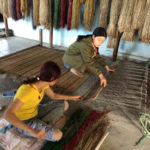










 We met a Grandpa San who’s name was “five” because his parents had so many children she could not keep track of thier names. He was a soldier in the ARV army during the war and was wounded in 1973 and returned to his village. After the war he was sent to a Communist reeducation camp for a year but he must have been on good behavior or a good actor becuse he was released in 6 months. I do not think he spoke English but was very interesed in his fellow veterans in the group. I’m sure there was a story there that would have been interesting to explore more.
We met a Grandpa San who’s name was “five” because his parents had so many children she could not keep track of thier names. He was a soldier in the ARV army during the war and was wounded in 1973 and returned to his village. After the war he was sent to a Communist reeducation camp for a year but he must have been on good behavior or a good actor becuse he was released in 6 months. I do not think he spoke English but was very interesed in his fellow veterans in the group. I’m sure there was a story there that would have been interesting to explore more.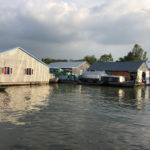
 We visited a Talipia Farm where the family operations make an after expenses income of $30,000 which is a excellent income. They produce two crops of fisk per year, it takes 5 months and grow about 350,000 fish per crop.
We visited a Talipia Farm where the family operations make an after expenses income of $30,000 which is a excellent income. They produce two crops of fisk per year, it takes 5 months and grow about 350,000 fish per crop. 
 This morning we departed the Mekong Navigator at 0830 for the “Killing Fields” Choung Ek memorial Stupta. Its hard to imaging the brutality that unfolder here when wandering through the peaceful, shady former longaorchard. The killing fields of Choung Ek was the scene of one of the most disturbing act of violence in contemporary history. The memorial stupa brings it home, displaying more than 8,000 skullaand their ragged clothes. In 1988 the memorial stupa was erected, and the museum in the corner of the grounds offers detailed background information on the Khmer rouge leaders, as well as victims. Of the 120 communal graves at Choung Ek, 49 49 have been left intact
This morning we departed the Mekong Navigator at 0830 for the “Killing Fields” Choung Ek memorial Stupta. Its hard to imaging the brutality that unfolder here when wandering through the peaceful, shady former longaorchard. The killing fields of Choung Ek was the scene of one of the most disturbing act of violence in contemporary history. The memorial stupa brings it home, displaying more than 8,000 skullaand their ragged clothes. In 1988 the memorial stupa was erected, and the museum in the corner of the grounds offers detailed background information on the Khmer rouge leaders, as well as victims. Of the 120 communal graves at Choung Ek, 49 49 have been left intact